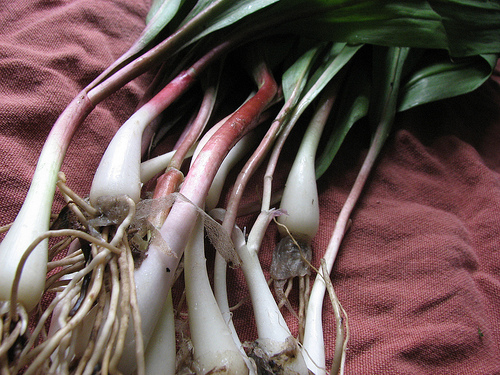What are ramps? And why should you care?

Every year as winter begrudgingly comes to an end, foodies everywhere start dreaming about their favorite first greens of spring. If asparagus isn't your thing (and I totally get that), you may want to start lusting after ramps instead.
I must confess, I never really knew what ramps were, either. I have seen them for sale but passed them over in favor of my other much-anticipated spring treat: Fresh, locally grown leeks. It turns out that ramps are a lot like leeks, actually. Both leeks and ramps (and garlic and onions and scallions) are alliums, and their use is similar.
(Note: Be careful not to confuse ramps with scapes, as I have in the past. Scapes are the long pigtail tendrils that grow from planted garlic bulbs in late spring. You can cut off the scapes from garlic and eat them separately, and they are delicious - although they have a strong garlic taste, and may be a bit much for non-garlic-lovers.)
The most significant fact about ramps is that they are not a cultured food. They grow wild across the eastern United States, and their growth habit is unpredictable and somewhat mysterious. A large patch may grow and grow and grow year after year, only to collapse and never grow again. They crop up here and there, and can grow in great abundance as a nuisance plant in land being cultivated for other uses.
Ramps have a narrow white bulb at the base, a long purple stem, and a few long green leaves. Ramps have a flavor halfway in between garlic and onions, described as "delicate." Yoshi Yamada, a former chef at Babbo, recommends giving them a quick sear in a pan with olive oil, dressing them with salt and pepper and a squeeze of lemon juice, and eating them on their own. You can also prepare them in dishes just as you would leeks or onion, but given their rarity, it seems a waste to bury them in a dish where they won't stand out.
Image courtesy Flickr/peppergrasss

0 comments